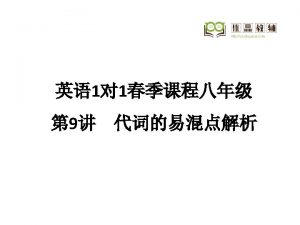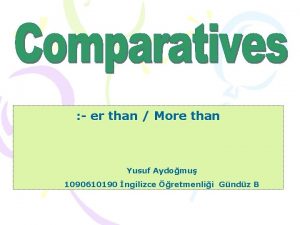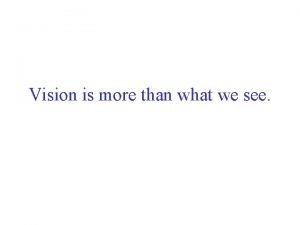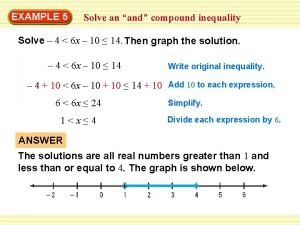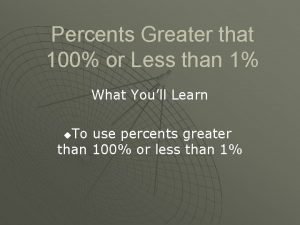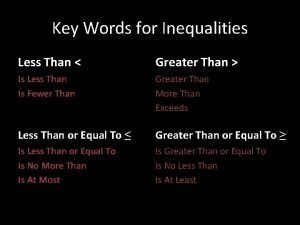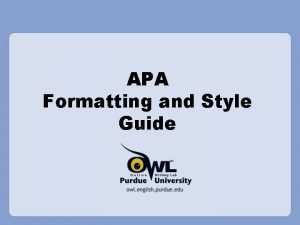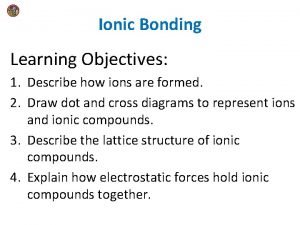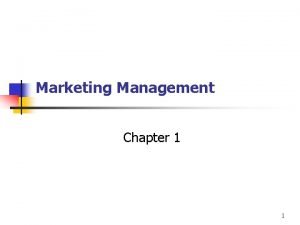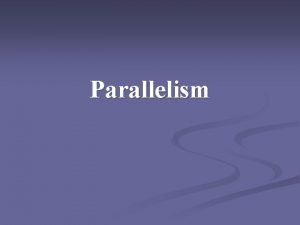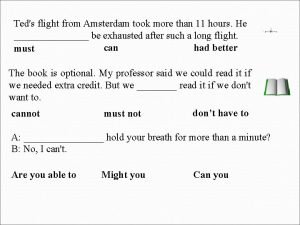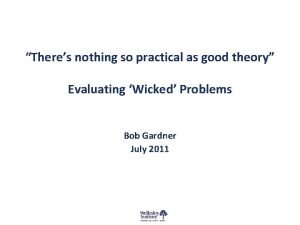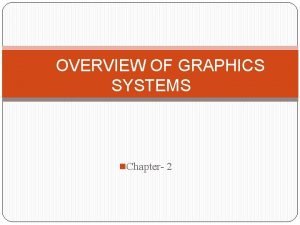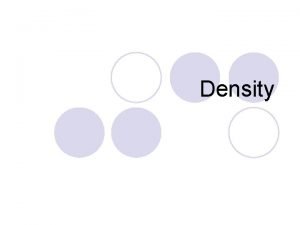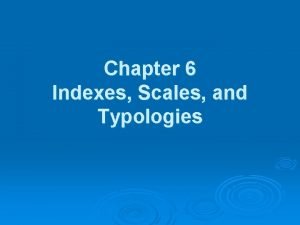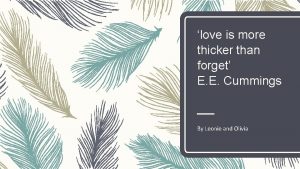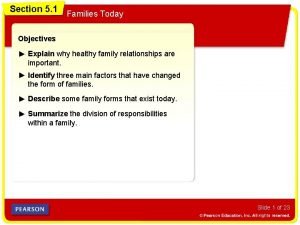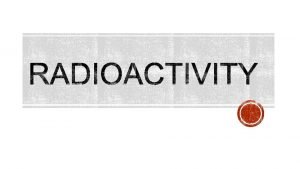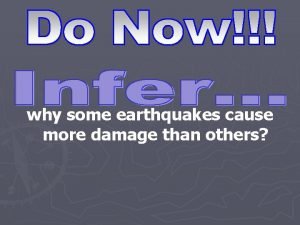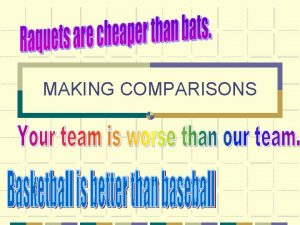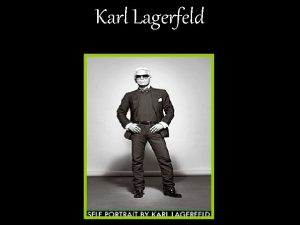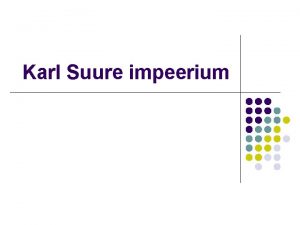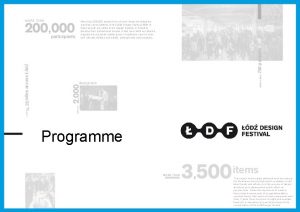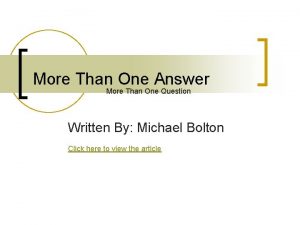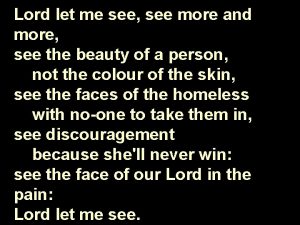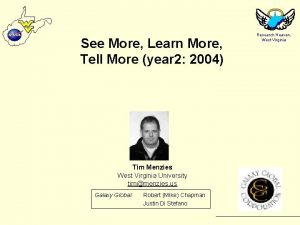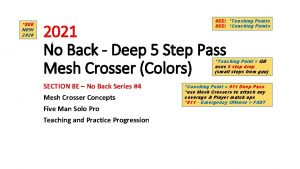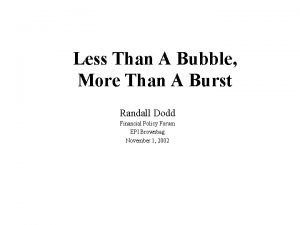Vision is more than what we see Karl



































- Slides: 35

Vision is more than what we see.

Karl Lashley American Psychologist 1890 -1958 Memory storage Migraine Headaches

Migraine alters Vision KW p. 278

Lashley’s Migraine

Sensation and Perception • Sensation – a process by which our sensory receptors and nervous system receive and represent stimulus energy • Perception – a process of organizing and interpreting sensory information, enabling us to recognize meaningful objects and events

Perception at Work

Bill or Monica?

Eye as Camera KW 8 -3

Eye Structures Figure 6. 2 Cross section of the vertebrate eye Note how an object in the visual field produces an inverted image on the retina.

Visual Coding and Retinal Receptors The Eye and Its Connections to the Brain Pupil-opening in the center of the eye that allows light to pass through Lens-focuses the light on the retina Retina-back surface of the eye that contains the photoreceptors The Fovea-point of central focus on the retina blind spot-the point where the optic nerve leaves the eye

Visual Coding and Retinal Receptors Transduction-the conversion of physical energy to an electrochemical pattern in the neurons Coding- one-to-one correspondence between some aspect of the physical stimulus and some aspect of the nervous system activity

Visual Spectrum KW 8 -2

Retina KW 8 -5

Optic Nerve Exits Figure 6. 4 Visual path within the eyeball The receptors send their messages to bipolar and horizontal cells, which in turn send messages to the amacrine and ganglion cells. The axons of the ganglion cells loop together to exit the eye at the blind spot. They form the optic nerve, which continues to the brain.

Locating Blindspot KW 8 -4

Rods and Cones KW 8 -6

Visual Receptors: Rods and Cones Rods abundant in the periphery of the retina best for low light conditions see black/white and shades of gray Night time Cones abundant around fovea best for bright light conditions see color Day time

Three Cones = Color Vision KW 8 -7

Afterimages KW 8 -36 Stare a box for 30 seconds

a


Lateral Inhibition Rods at work Figure 6. 18 An illustration of lateral inhibition Do you see dark diamonds at the “crossroads”?

Lateral Inhibition Figure 6. 18 An illustration of lateral inhibition Do you see dark diamonds at the “crossroads”?

Convergence

Retinal Circuits

Retinal Layers Amacrine Bipolar (Blue) KW 8 -9 (Purple)

Visual Pathway KW 8 -11

Retina to Thalamus An Overview of Visual System Rods and Cones synapse to bipolar cells Bipolar cells synapse to ganglion cells Axons of the ganglion cells leave the back of the eye The inside half of the axons of each eye cross over in the optic chiasm Pass through the lateral geniculate nucleus

Optic Nerve to LGN Nasal Fibers KW 8 -15 Temporal Fibers

LGN KW 8 -10

LGN and Superior Colliculus KW 8 -12

Striate (Primary) Cortex KW 8 -13

Cell Bodies in Striate KW 8 -13

Visual Fields KW 8 -20

Fovea on Cortex KW 8 -22
 Lirik lagu more more more we praise you
Lirik lagu more more more we praise you More more more i want more more more more we praise you
More more more i want more more more more we praise you Half life more than 2 less than 4
Half life more than 2 less than 4 Greater than god and more evil
Greater than god and more evil Generous kelimesinin comparative hali
Generous kelimesinin comparative hali Karl vision
Karl vision Human vision vs computer vision
Human vision vs computer vision Greater than less than examples
Greater than less than examples Equivalent fractions odd one out
Equivalent fractions odd one out Percents less than 1
Percents less than 1 Jesus lord of heaven
Jesus lord of heaven Greater than less than fractions
Greater than less than fractions Numberblocks greater than less than
Numberblocks greater than less than Less than key words
Less than key words Beneath this mask there is an idea
Beneath this mask there is an idea Why is mass more useful than weight for measuring matter
Why is mass more useful than weight for measuring matter Apa in text citation with et al
Apa in text citation with et al Why are related forms more agreeable than unrelated forms
Why are related forms more agreeable than unrelated forms Positive ions are atoms that have
Positive ions are atoms that have Marketing more than any other business function deals with
Marketing more than any other business function deals with How are terrestrial planets different from jovian planets?
How are terrestrial planets different from jovian planets? What is parallelism
What is parallelism At stp which gas will diffuse more readily than ne
At stp which gas will diffuse more readily than ne Why does new guinea have more species of birds than bali?
Why does new guinea have more species of birds than bali? Somatic cells vs germ cells
Somatic cells vs germ cells Ted's flight
Ted's flight I would be more than delighted
I would be more than delighted Marketing more than any other business function deals with
Marketing more than any other business function deals with There's nothing more practical than a good theory
There's nothing more practical than a good theory The frame rate of a random scan architecture is 60-80 hz
The frame rate of a random scan architecture is 60-80 hz Matter is anything that...
Matter is anything that... Scale scores convey more information than index scores.
Scale scores convey more information than index scores. Love is more thicker than forget ee cummings
Love is more thicker than forget ee cummings Blended family
Blended family Can an atom have more neutrons than protons
Can an atom have more neutrons than protons Why do some earthquakes cause more damage than others
Why do some earthquakes cause more damage than others



